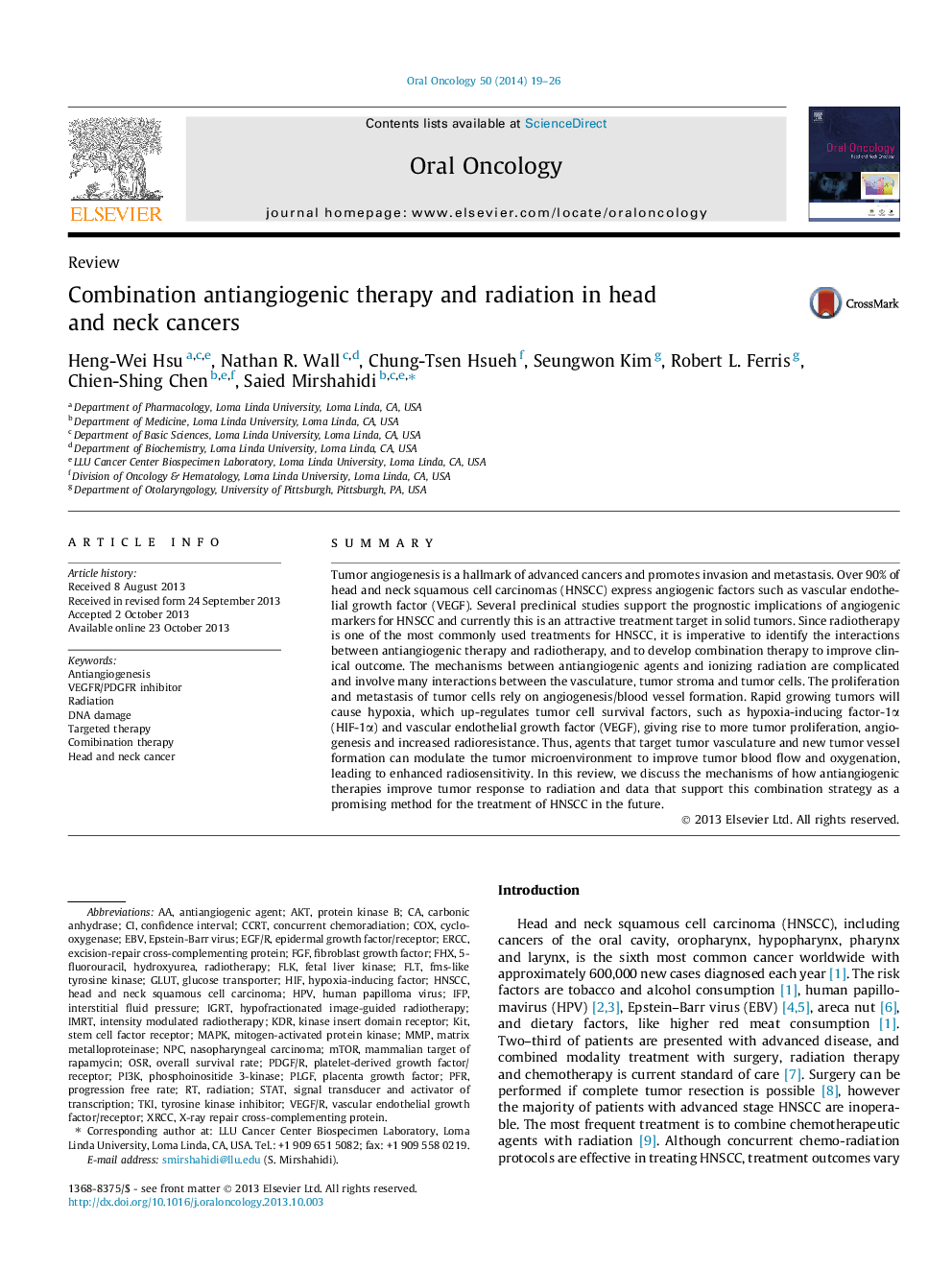| Article ID | Journal | Published Year | Pages | File Type |
|---|---|---|---|---|
| 3164197 | Oral Oncology | 2014 | 8 Pages |
SummaryTumor angiogenesis is a hallmark of advanced cancers and promotes invasion and metastasis. Over 90% of head and neck squamous cell carcinomas (HNSCC) express angiogenic factors such as vascular endothelial growth factor (VEGF). Several preclinical studies support the prognostic implications of angiogenic markers for HNSCC and currently this is an attractive treatment target in solid tumors. Since radiotherapy is one of the most commonly used treatments for HNSCC, it is imperative to identify the interactions between antiangiogenic therapy and radiotherapy, and to develop combination therapy to improve clinical outcome. The mechanisms between antiangiogenic agents and ionizing radiation are complicated and involve many interactions between the vasculature, tumor stroma and tumor cells. The proliferation and metastasis of tumor cells rely on angiogenesis/blood vessel formation. Rapid growing tumors will cause hypoxia, which up-regulates tumor cell survival factors, such as hypoxia-inducing factor-1α (HIF-1α) and vascular endothelial growth factor (VEGF), giving rise to more tumor proliferation, angiogenesis and increased radioresistance. Thus, agents that target tumor vasculature and new tumor vessel formation can modulate the tumor microenvironment to improve tumor blood flow and oxygenation, leading to enhanced radiosensitivity. In this review, we discuss the mechanisms of how antiangiogenic therapies improve tumor response to radiation and data that support this combination strategy as a promising method for the treatment of HNSCC in the future.
